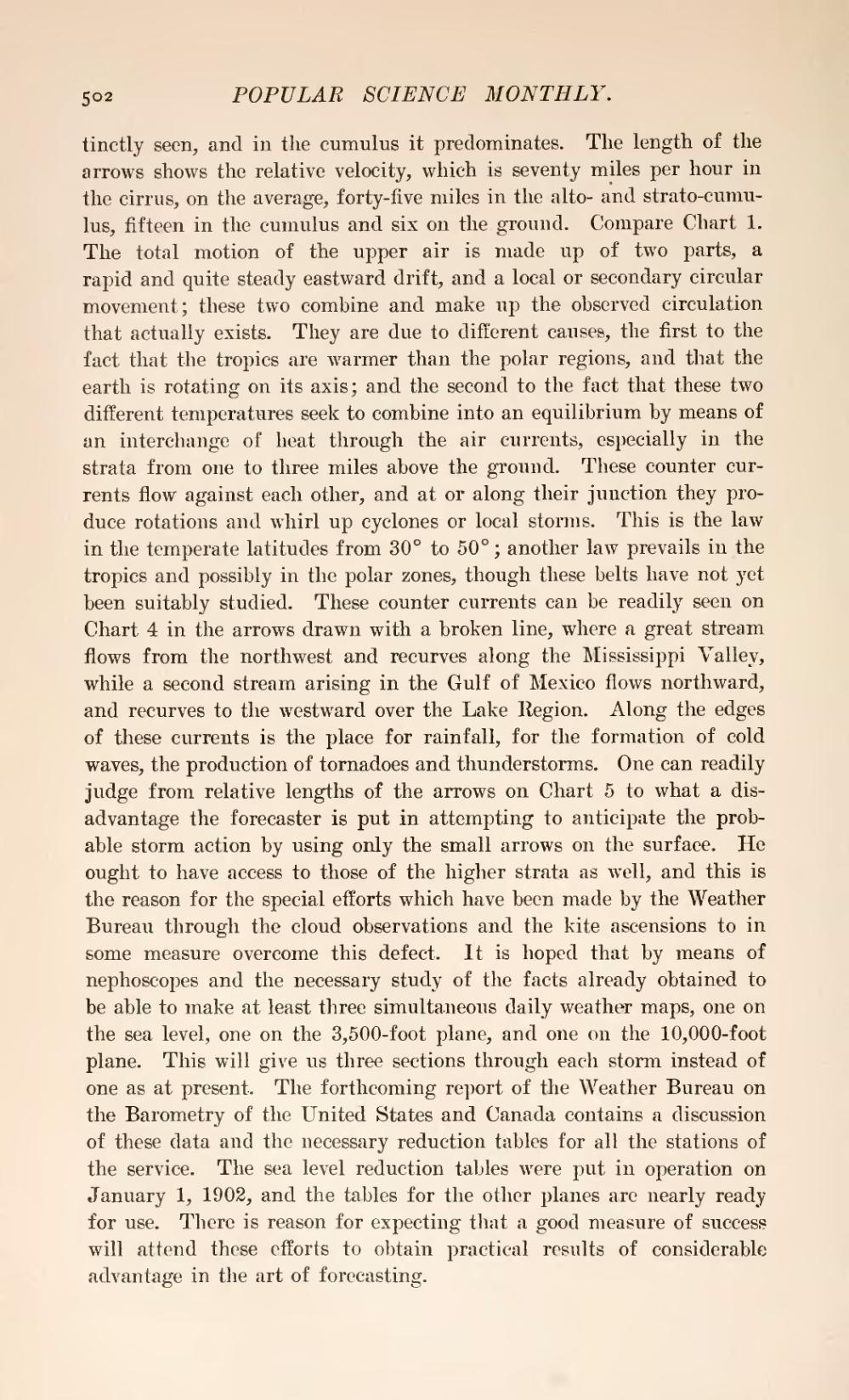tinctly seen, and in the cumulus it predominates. The length of the arrows shows the relative velocity, which is seventy miles per hour in the cirrus, on the average, forty-five miles in the alto-and strato-cumulus, fifteen in the cumulus and six on the ground. Compare Chart 1. The total motion of the upper air is made up of two parts, a rapid and quite steady eastward drift, and a local or secondary circular movement; these two combine and make up the observed circulation that actually exists. They are due to different causes, the first to the fact that the tropics are warmer than the polar regions, and that the earth is rotating on its axis; and the second to the fact that these two different temperatures seek to combine into an equilibrium by means of an interchange of heat through the air currents, especially in the strata from one to three miles above the ground. These counter currents flow against each other, and at or along their junction they produce rotations and whirl up cyclones or local storms. This is the law in the temperate latitudes from 30° to 50°; another law prevails in the tropics and possibly in the polar zones, though these belts have not yet been suitably studied. These counter currents can be readily seen on Chart 4 in the arrows drawn with a broken line, where a great stream flows from the northwest and recurves along the Mississippi Valley, while a second stream arising in the Gulf of Mexico flows northward, and recurves to the westward over the Lake Region. Along the edges of these currents is the place for rainfall, for the formation of cold waves, the production of tornadoes and thunderstorms. One can readily judge from relative lengths of the arrows on Chart 5 to what a disadvantage the forecaster is put in attempting to anticipate the probable storm action by using only the small arrows on the surface. He ought to have access to those of the higher strata as well, and this is the reason for the special efforts which have been made by the Weather Bureau through the cloud observations and the kite ascensions to in some measure overcome this defect. It is hoped that by means of nephoscopes and the necessary study of the facts already obtained to be able to make at least three simultaneous daily weather maps, one on the sea level, one on the 3,500-foot plane, and one on the 10,000-foot plane. This will give us three sections through each storm instead of one as at present. The forthcoming report of the Weather Bureau on the Barometry of the United States and Canada contains a discussion of these data and the necessary reduction tables for all the stations of the service. The sea level reduction tables were put in operation on January 1, 1903, and the tables for the other planes are nearly ready for use. There is reason for expecting that a good measure of success will attend these efforts to obtain practical results of considerable advantage in the art of forecasting.
